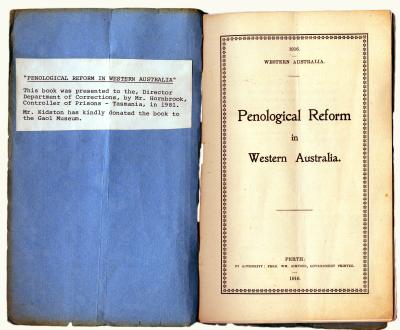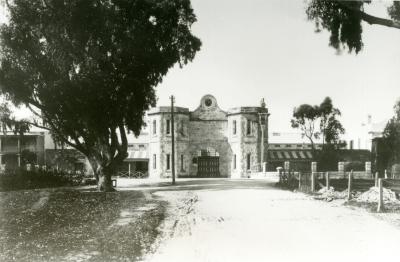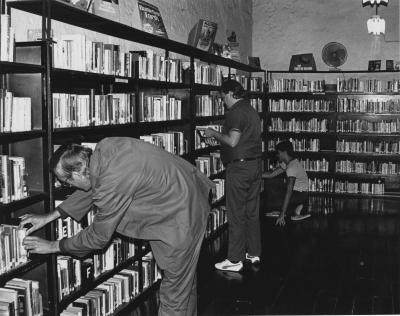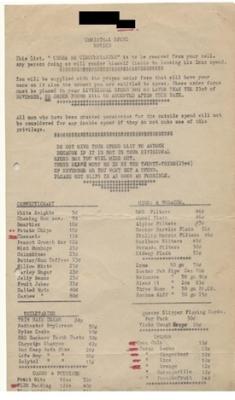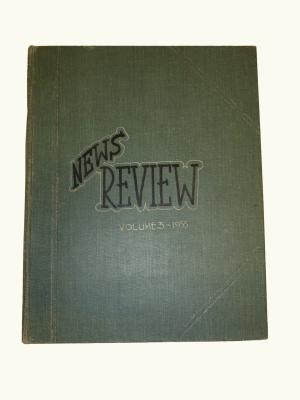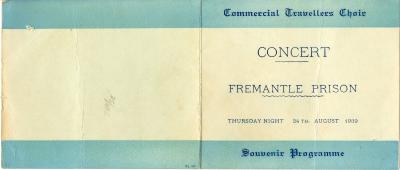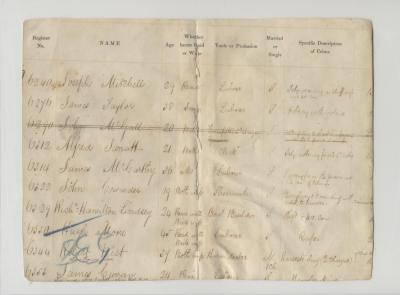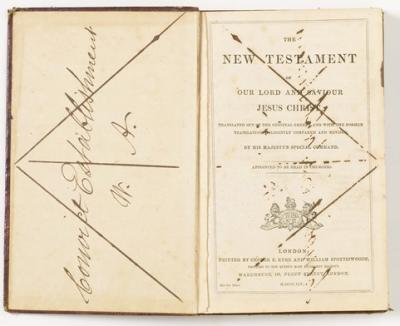BOOKLET ON PARDELUP PRISON FARM
1928Small, bound and printed, yellow paper booklet. Printed on the front cover in black ink, "PRISON REFORM/ IN/ WESTERN AUSTRALIA/ The/Pardelup Prison/ Farm/ By HON. J. M. DREW, M.L.C./ Chief Secretary/ PERTH, W. A., 1928." Inside are 16 pages, printed in black with illustrations. Inside both front and back covers is a black stamp reading, "DEPARTMENT OF CORRECTIONS/ RESEARCH LIBRARY".
This booklet once formed part of the Department of Corrections Research Library. The Department of Corrections was so named between 1971 and 1982.
This booklet contains information and regulations which governed the Pardelup Prison Farm. It was printed in 1928, one year after the farm was opened.
Details
Details
In 1927 Pardelup was a penal outstation of Fremantle Prison. Whilst Superintendent Badger had overall authority over both establishments, there was an Officer-in-Charge who had local control over the inmates at Pardelup and the farm’s operations. The inmates of Pardelup were mostly first offenders or men chosen as suitable for reintegration into society. The prisoners were chosen for their good behaviour and ability to execute farm work. It was a privilege to be chosen as one of the 20 to 40 prisoners to reside at Pardelup. There were no barred cells or locked doors, and no armed warders or harsh discipline. Every effort was made to assist men in re-establishing their self-respect and in many cases they returned to society in better physical and mental condition.
Inmates at Pardelup were quartered in well-constructed huts, with each man having a separate room. Many added to the standard equipment of a bed, mattress, six blankets, locker and table. Some also carried out tasteful interior decoration, adding items such as rugs made from rabbit and fox skins, or framed photographs.
While serving their sentence, the inmates had ample opportunity to work on tasks suited to their abilities. Employment included tending the pine nurseries, maintaining roads and firebreaks. Those with a flair for handicrafts were given work in the carpenters’ shop or the blacksmithing workshop, and assisted with various buildings and construction work. The engine room offered scope for the mechanically minded, while other men were employed in the vegetable gardens, orchard and dairy. The farm also had its own shearing shed. A tally on the wall of the shed stated that the record was 272 sheep shorn in a single day in 1941.
Following successful community consultation in June 2002, Pardelup Prison Farm was converted into a work camp housing approximately 12 minimum-security prisoners. It then reopened as a Prison Farm in February 2010, due to the increase in the State's prison population. Today, the prisoner’s at Pardelup are given the opportunity to complete certificates in topics such as horticulture and construction.
Throughout Pardelup’s history, it has played a vital role in the Western Australia prison system, providing constructive work for minimum-security prisoners, helping them rehabilitate and reintegrate them back into the community.
